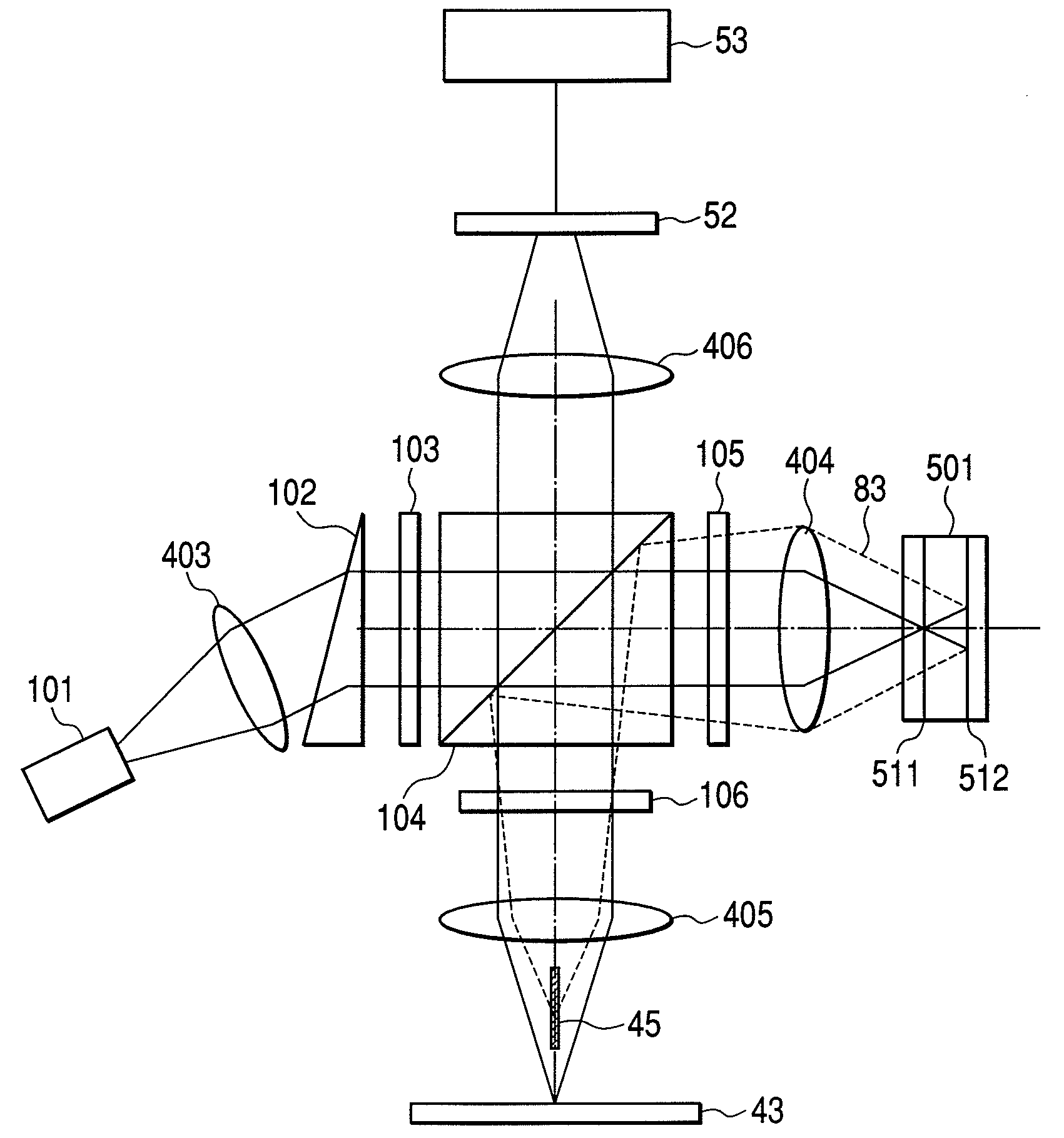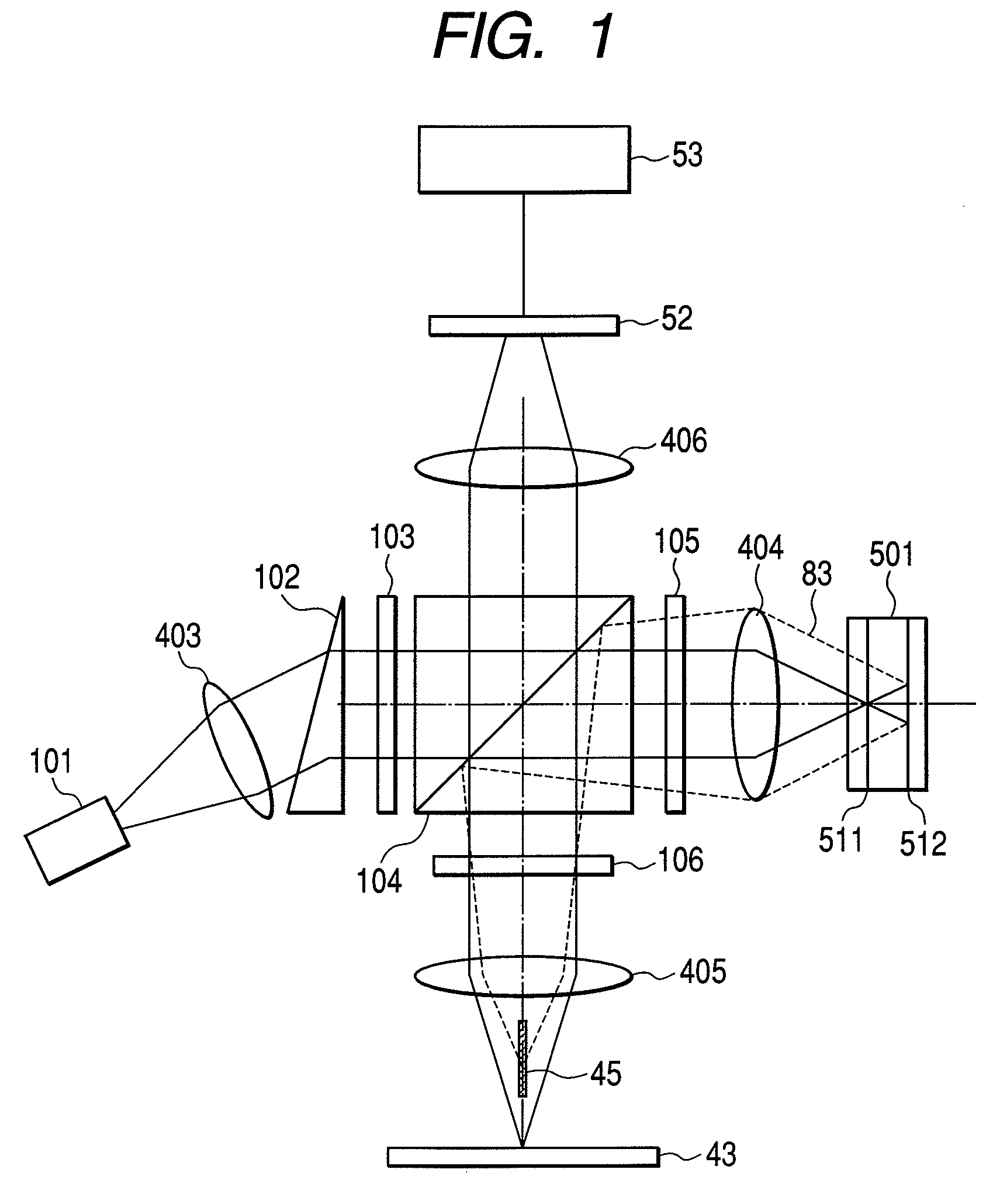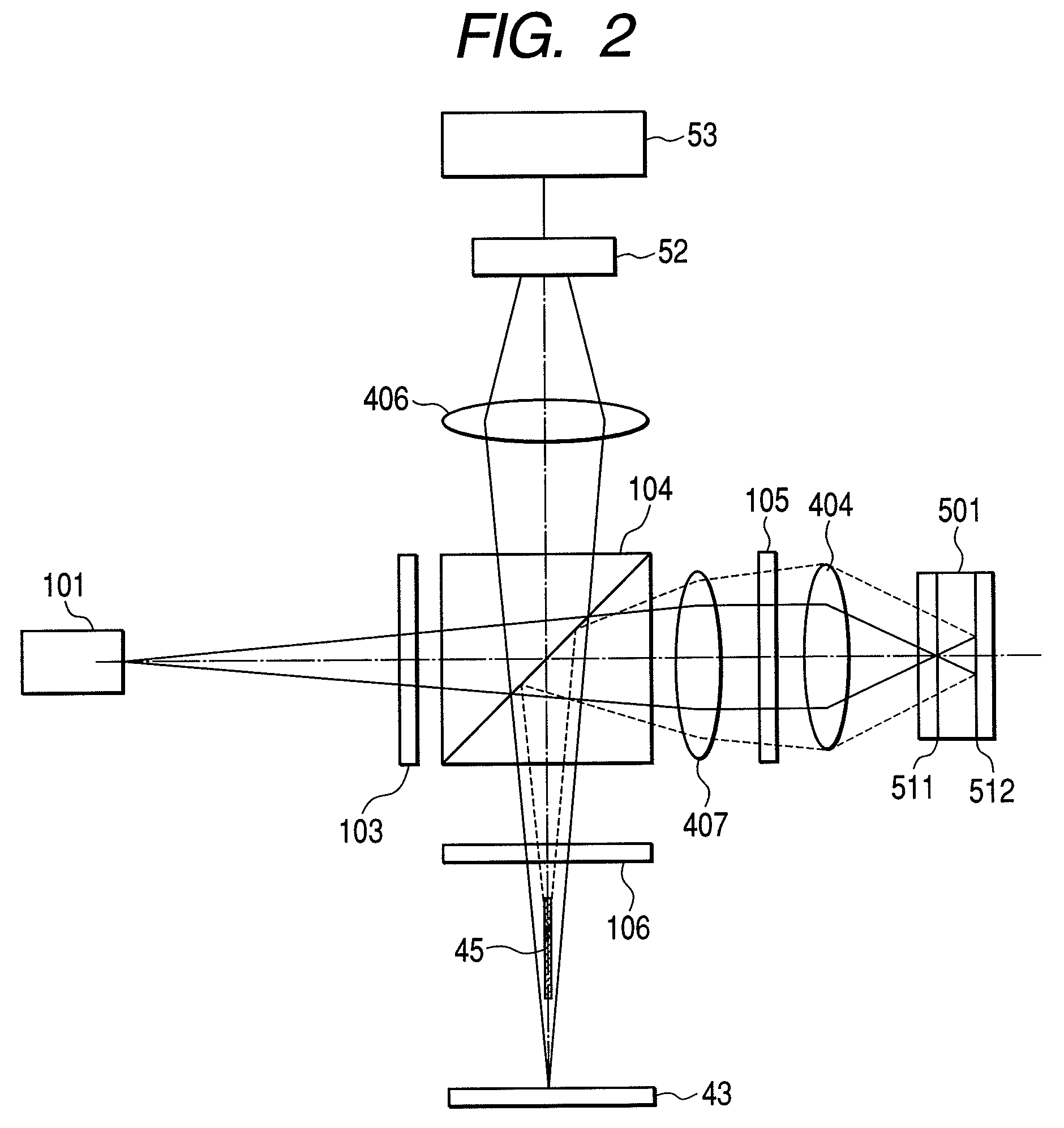Optical pickup apparatus
a pickup apparatus and optical technology, applied in the field of optical pickup apparatus, can solve the problems of deterioration in the error rate at the time of reading data, variation of tr signal, failure as a tracking error may be generated, etc., to reduce the quantity of reflected light due to the adjacent layer incident to a subsidiary optical detector, reduce the jitter of data signal, and improve the reliability of read data.
- Summary
- Abstract
- Description
- Claims
- Application Information
AI Technical Summary
Benefits of technology
Problems solved by technology
Method used
Image
Examples
first embodiment
[0058]FIG. 1 shows an optical system of an optical pickup apparatus as a first embodiment of the present invention. A laser beam emitted from a semiconductor laser 101 is converted into a circularly collimated optical beam with a collimator lens 403 and a triangular prism 102. The collimated laser beam is split into three beams with a diffraction grating 103 formed of one main light beam and a couple of subsidiary light beams. Travelling direction of the main light beam is identical to the incident beam, but the subsidiary light beams become the emitted light beams having a certain inclination in both sides of the optical axis. Usually, difference in quantity of light beams between the main light beam and the subsidiary light beams is set to 10 times or more. Three laser beams are transmitted through a polarized beam splitter 104, converted to circular polarization with a λ / 4 plate 105, and are then focused with an objective lens 404 to a multilayer disc 501 being rotated with a rot...
second embodiment
[0064]FIG. 2 shows an optical system of the optical pickup apparatus as a second embodiment of the present invention. In this second embodiment, the diffraction grating 103 and the polarized beam splitter 104 are provided nearer the semiconductor laser 11 than the collimator lens 407. Therefore, the laser beam emitted from the semiconductor laser 101 is transmitted through the polarized beam splitter 104 under the state of divergent light beam, thereafter collimated with the collimator lens 407, and is then incident to the λ / 4 plate 105. In the first embodiment, since both diffraction grating 103 and the polarized beam splitter 104 have been provided at the area between the collimator lens 403 and the objective lens 404, the focusing lens 405 has also been required. However, in the second embodiment, since an optical beam reflected from the read object layer 511 of the multilayer disc 501 is converted to the convergent light beam as shown in FIG. 2, the focusing lens is no longer re...
third embodiment
[0065]FIG. 22 shows an optical system of the optical pickup apparatus as a third embodiment of the present invention. The reflected light from the optical disc 501 is reflected with the polarized beam splitter 104, thereafter converted into the circularly polarized light beam passing through the λ / 4 plate 106, and are then reflected by the reflection plate 43. The reflected light from the adjacent layer 512 is removed by the attenuation element 46. The reflection plate 43 is provided with the optical detector 52 at the area far from the optical axis, but this detector 52 does not detect in direct the reflected light from the optical disc reflected by the polarized beam splitter 104. Since the reflected light from the relevant layer 411 reflected by the reflection plate 43 passes through the λ / 4 plate 106 to become the light beam rotated by 90 degrees in its polarizing direction from the light beam entering the λ / 4 plate 106. Accordingly, this polarized light beam passes through the ...
PUM
| Property | Measurement | Unit |
|---|---|---|
| wavelength | aaaaa | aaaaa |
| optical | aaaaa | aaaaa |
| optical axis | aaaaa | aaaaa |
Abstract
Description
Claims
Application Information
 Login to View More
Login to View More - R&D
- Intellectual Property
- Life Sciences
- Materials
- Tech Scout
- Unparalleled Data Quality
- Higher Quality Content
- 60% Fewer Hallucinations
Browse by: Latest US Patents, China's latest patents, Technical Efficacy Thesaurus, Application Domain, Technology Topic, Popular Technical Reports.
© 2025 PatSnap. All rights reserved.Legal|Privacy policy|Modern Slavery Act Transparency Statement|Sitemap|About US| Contact US: help@patsnap.com



